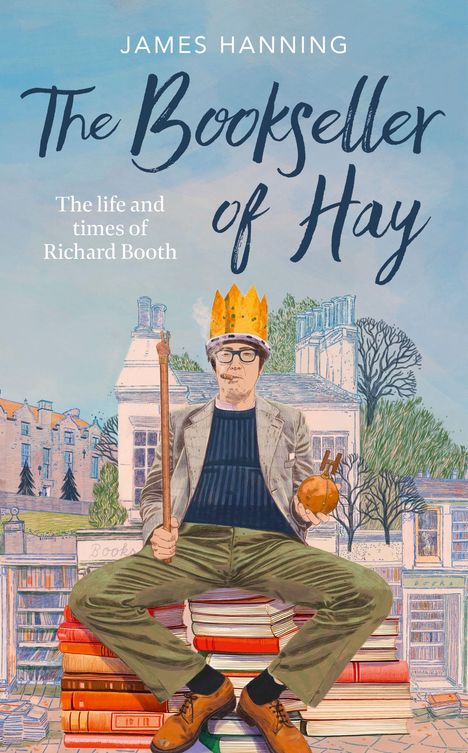James Hanning: The Bookseller of Hay, Gebunden
The Bookseller of Hay
(soweit verfügbar beim Lieferanten)
- Verlag:
- Little, Brown Book Group, 12/2025
- Einband:
- Gebunden
- Sprache:
- Englisch
- ISBN-13:
- 9781472159786
- Artikelnummer:
- 11905182
- Umfang:
- 320 Seiten
- Gewicht:
- 440 g
- Maße:
- 222 x 138 mm
- Stärke:
- 22 mm
- Erscheinungstermin:
- 16.12.2025
- Hinweis
-
Achtung: Artikel ist nicht in deutscher Sprache!
Weitere Ausgaben von The Bookseller of Hay |
Preis |
|---|---|
| Buch, Kartoniert / Broschiert, Englisch | EUR 17,55* |
Klappentext
'A breathtakingly hilarious and absorbing portrait of one of the most brilliant, dotty, dippy delirious yet ultimately inspiring eccentrics in British history . . . A remarkable story of cultural life, friendship, obsession and passion' Stephen Fry
' Brilliantly evocative, like listening to the gossip of ghosts' Bruce Robinson
'The Bookseller of Hay is the very model of a biography which amazes, occasionally horrifies and entirely engrosses . . . James Hanning is a writer of sublime insight, style and skill' Horatio Clare
'What you have to understand is that Richard Booth was completely mad' Marianne Faithfull
In 1962, a young man left university without a degree and, for want of anything better to do, bought a small shop in an obscure market town on the edge of the Brecon Beacons. Within fifteen years, largely through force of personality, Richard Booth had created the world's largest second-hand bookshop, attracting thousands of visitors from across the globe to Hay-on-Wye, on the Welsh border.
The Bookseller of Hay tells the tale of an extraordinary, chaotic man, a true British eccentric, who invented the term 'book town', attracted a coterie of exotic and illustrious followers, crowned himself king, declared the town's independence and provided the bookish backdrop which - to his frustration - allowed a rival attraction, the now world-famous Hay Festival, to flourish.
It is a story of the extraordinary singlemindedness of a hard-working, hard-playing and rebellious son of privilege, inspired by a romantic vision and a deep love of the area, of a man better suited to publicity than bean-counting, who launched countless careers but whose business instincts undermined precisely what had brought success. Booth was a deeply divisive figure, but love him or hate him, all agree on one thing. He put Hay on the map.
James Hanning, a frequent visitor to Hay since the 1960s, has interviewed dozens of local people and booksellers and with typical acuity wonderfully captures this bygone era of eccentricity and excess.


